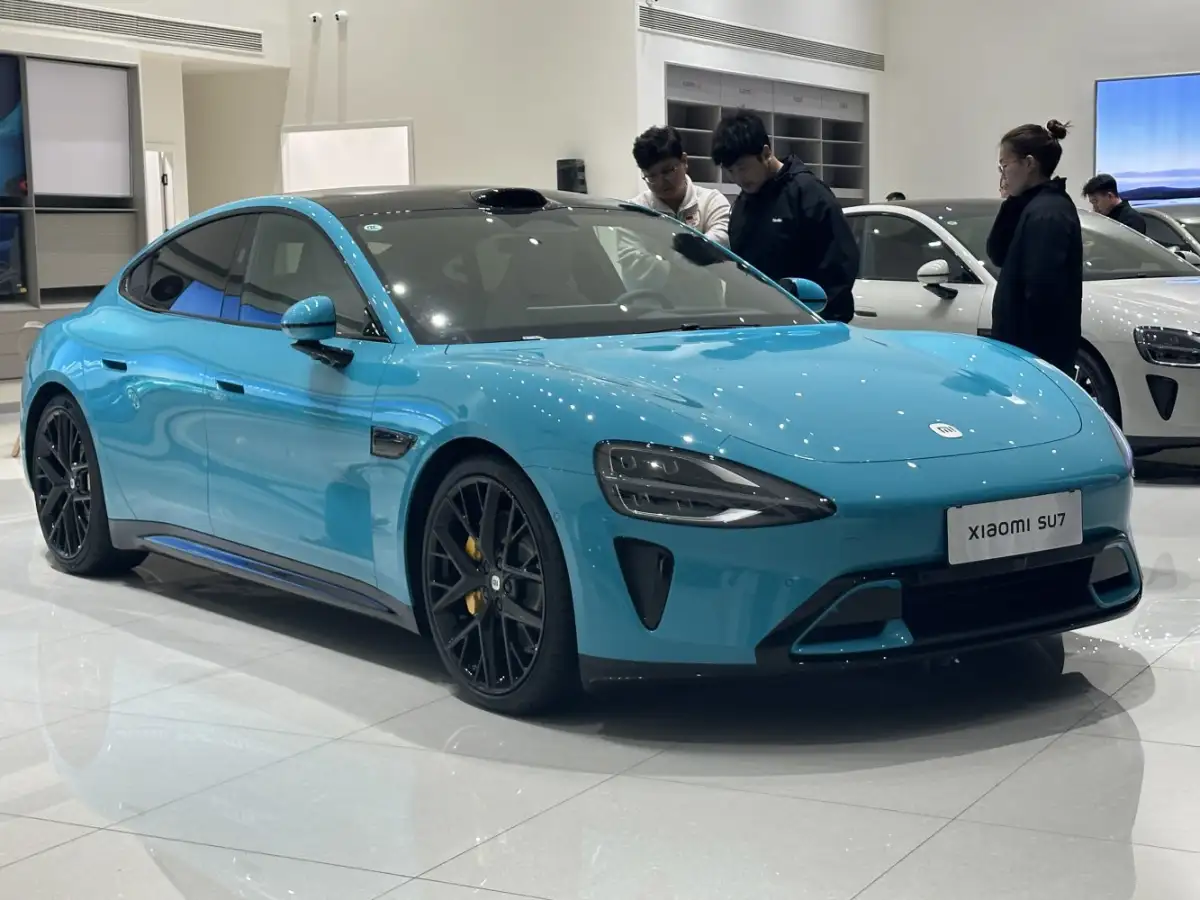In a surprising move that’s causing a stir across the automotive world, Ford’s CEO Jim Farley has openly admitted to personally importing and driving a Xiaomi SU7 Ultra electric sedan from Shanghai to Chicago. For months now, Farley has been enjoying the Chinese-made electric car, openly refusing to give it up despite the potential negative impact on Ford's image. So, what's so special about this Xiaomi EV that captured the heart of one of America's top automotive executives?
What Makes the Xiaomi SU7 Ultra Irresistible to Ford’s CEO?

The first thing that caught Jim Farley’s eye was undoubtedly the spectacular specifications of the Xiaomi SU7 Ultra. With a fully carbon-fiber body, the car weighs just 1,900 kg and sports a distinctive yellow paint that immediately draws attention. Its dimensions emphasize a sporty and commanding presence: 5115 mm long, 1970 mm wide, and 1465 mm tall, with a wheelbase of 3000 mm, providing exceptional handling and stability.
But what truly made Farley fall in love was the phenomenal performance. The SU7 Ultra features a triple electric motor setup producing a mind-blowing 1,548 horsepower, enabling it to accelerate from 0 to 100 km/h in just 1.98 seconds, numbers that rival, and even surpass, renowned supercars. Despite this incredible performance, the base model in China starts at approximately $30,000, though the high-performance Ultra variant costs significantly more, around 814,900 yuan ($116,000).
What Did Jim Farley Find Inside the SU7 Ultra That Ford Couldn’t Offer?

When Farley stepped inside the Xiaomi SU7 Ultra, he discovered an interior that instantly transports drivers into a racing cockpit environment. The racing-inspired steering wheel, flat at the top and bottom, is wrapped in luxurious Alcantara and carbon fiber, complete with a Ferrari-like red "Boost" driving mode button. Seats are crafted from premium yellow leather and black Alcantara, matching the exterior's sporty theme perfectly.
Tech-wise, the SU7 Ultra is equally impressive. A huge infotainment screen powered by Xiaomi’s HyperOS operating system and the Qualcomm Snapdragon 8295 chipset dominates the dashboard, alongside a fully digital instrument cluster. These advanced technologies and the performance-oriented design elements deliver an unmatched driving experienceو, something Farley perhaps found lacking even in Ford’s most advanced EV offerings.
Why is Jim Farley Risking Ford’s Image for a Chinese Electric Car?

It’s highly unusual for the head of an iconic American car brand like Ford to publicly favor a competitor’s product, especially from a rising Chinese brand. But Farley’s decision isn't merely personal; it sends a clear message to Ford and the entire automotive industry: the future of electric mobility is changing faster than expected, and Chinese manufacturers are leading the charge.
By importing and driving the Xiaomi SU7 Ultra, Farley highlights the competitive edge Chinese brands have achieved, exceptional performance, advanced technology, and competitive pricing. His refusal to give up the SU7 Ultra, despite potential criticism, indicates that traditional manufacturers like Ford must rethink their strategy to remain competitive in a rapidly evolving global market.
Ultimately, Farley's bold choice is both a personal passion and a strategic wake-up call, emphasizing that innovation and competition can come from unexpected places, even from outside traditional automotive strongholds.
4 pics

Senior Writer The quest for automotive knowledge began as soon as the earliest memories. Various sources information, even questionable ones, have been explored including video games, television, magazines, or even internet forums. Still stuck in that rabbit hole.

















